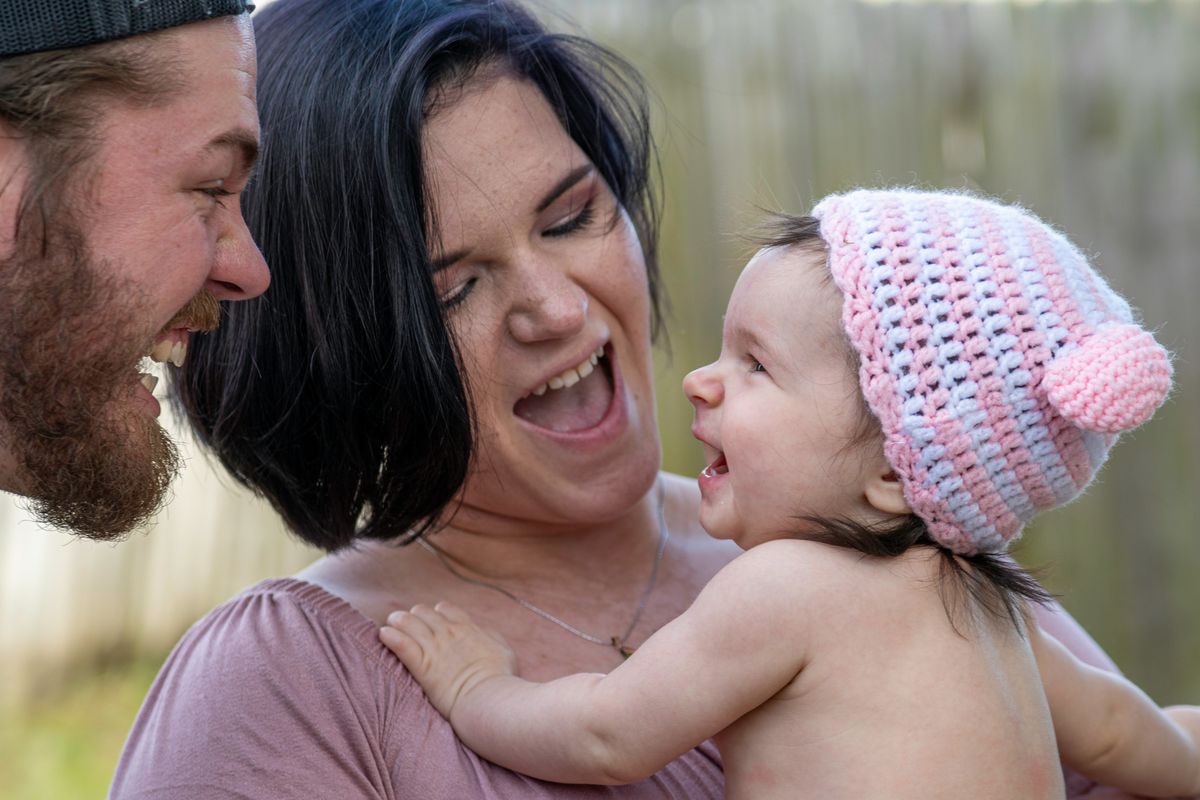Therapist and mom helps struggling parents by explaining care tasks are ‘morally neutral'
'It's morally neutral' is my new phrase!

Parents can sometimes struggle with the responsibility of keeping little people that depend on them alive, healthy and respectful, while also trying to maintain some semblance of a life outside of their kids. Keeping a house running, the lights on and maintaining relationships can result in balls being dropped due to sheer overwhelm. Care tasks like laundry, sweeping, mopping and even showering can end up getting sidelined. Care tasks are simply things that mean caring for one’s self or one’s space, otherwise known as cleaning or activities of daily living. The goal, no matter what you call it, is taking care of yourself.
K.C. Davis, a licensed professional counselor and mom, is known on TikTok for her approach to care tasks by taking the morality and shame out of completing or not completing these tasks. Davis’ catchphrase is “it’s morally neutral” when explaining that homes don’t need to be immaculate to show you care about your space, they just need to be functional.
Let’s take a moment to face an unfortunate fact that still perseveres in our modern society. The brunt of household tasks and family management is handled by the default parent, and in many households, that default parent is the mother. This is also known as invisible labor as it involves tasks that are expected to be completed, typically go unnoticed when they are completed, but are shockingly evident when they go undone.
@domesticblisters #strugglecare #mentalhealth #caretasks #childhood
Davis makes caring for your home, self and children less of a moral duty that can make you feel like a failure and more like things that engender feelings of empowerment. She encourages the default parent to even the load by having open communication with their partner on what they need to feel supported.
Davis also spends time explaining tips and tricks that help her get things done, like setting a visual timer. We get to witness how she utilizes this timer in her everyday life through her videos showing how she “resets her space.” In the majority of her videos she encourages people to think of the functionality of their space and making it work for them.
@domesticblisters Reply to @imhailey000 #strugglecare #mentalhealth #ADHD #cleantok #homecare #messismorallyneutral
According to Davis, functionality is key when it comes to care tasks, and she’s prepared with the tools for transforming a space from chaotic to functional. The focus of her videos is never on cleanliness, which can rub some folks the wrong way (as evidenced by her comment section). Her goal is to give primary caregivers and even single people the permission and empowerment to know that they deserve a functional space, and that care tasks are morally neutral.
In her book, "How to Keep House While Drowning," Davis explains how to be gentle with yourself while also caring for yourself and your home in a way that works best for you. Her gentle approach to care tasks is what keeps people coming back. It’s the validation that we all need.
This article originally appeared on 3.25.22
- Woman shares her therapist's surprisingly helpful mental health tip ... ›
- 101 ways to take care of yourself when the world feels ... ›
- Therapist with ADHD shares how she learned to clean - Upworthy ›
- The expert-approved communication tip to keep "default parenting" from happening - Upworthy ›
- Mom teaches her kids groundbreaking approach to chores with her 'Notice and Do' list - Upworthy ›
- Doorbell video captures phenomenon of the default parent - Upworthy ›
- Sabrina Benaim explains her depression to her mother - Upworthy ›
- New study determines the shocking yearly dollar value of a mother's work - Upworthy ›
- How schools promote moms as default parents - Upworthy ›
- As a therapist, I've never punished my children and here's why - Upworthy ›
- Burnout has therapists seeking other careers when mental health care is needed more than ever - Upworthy ›

